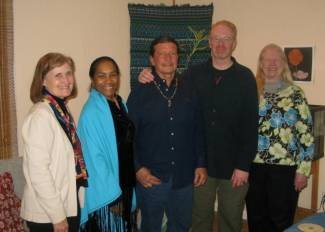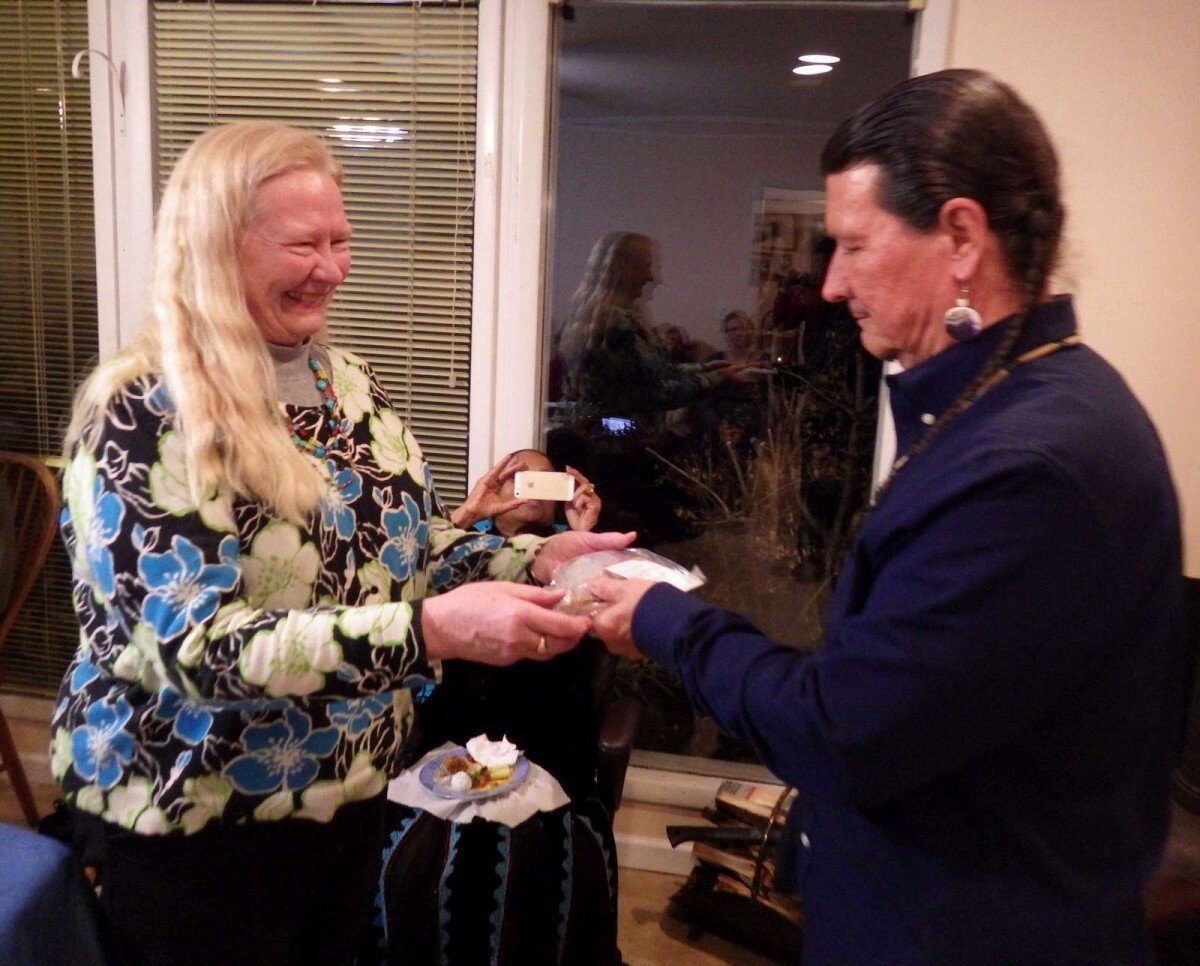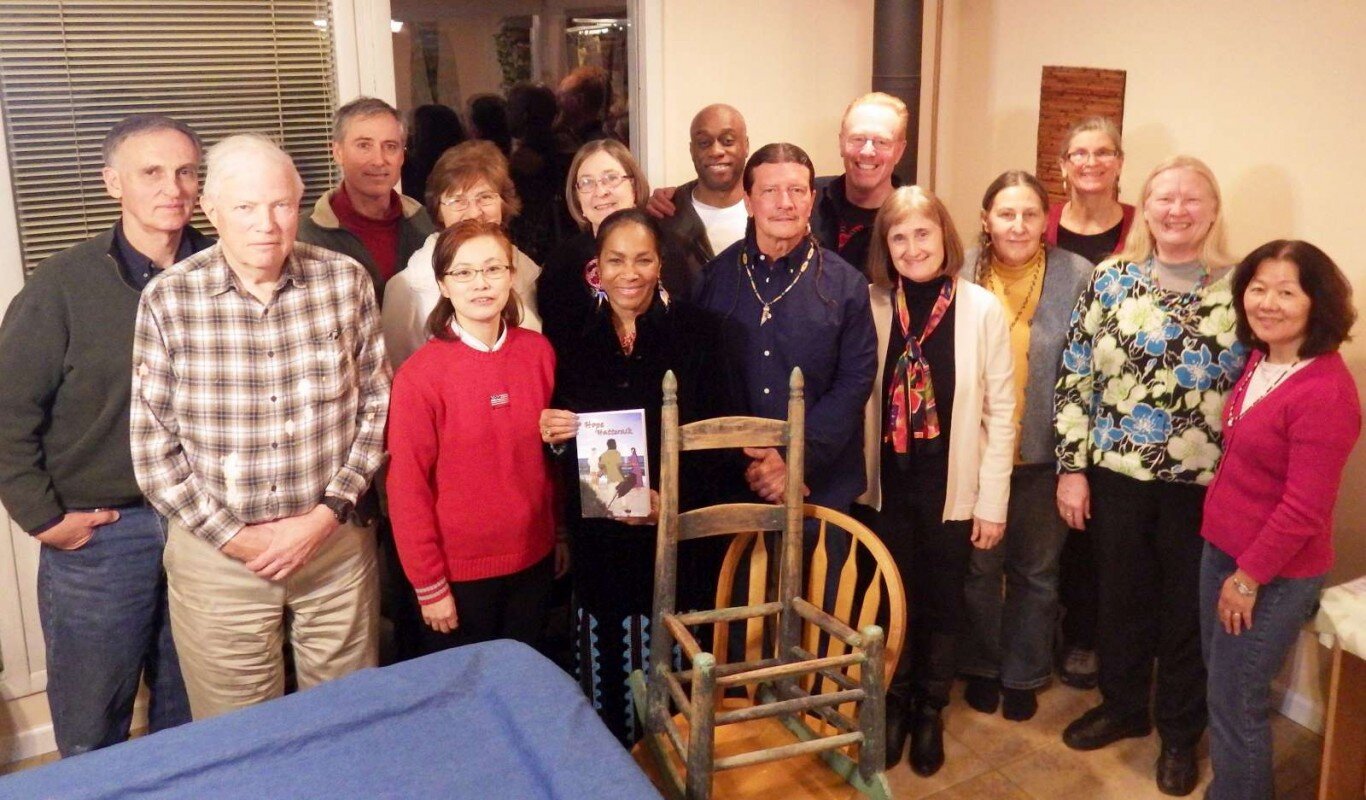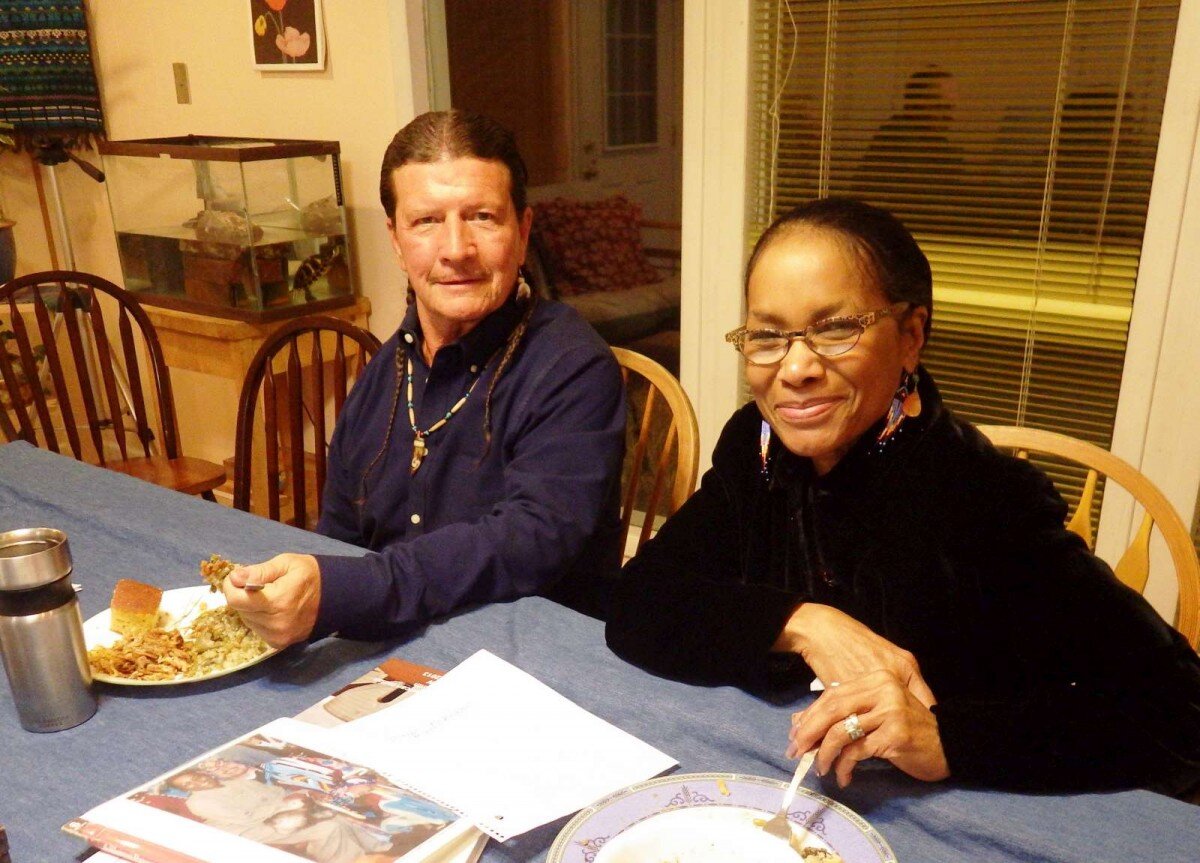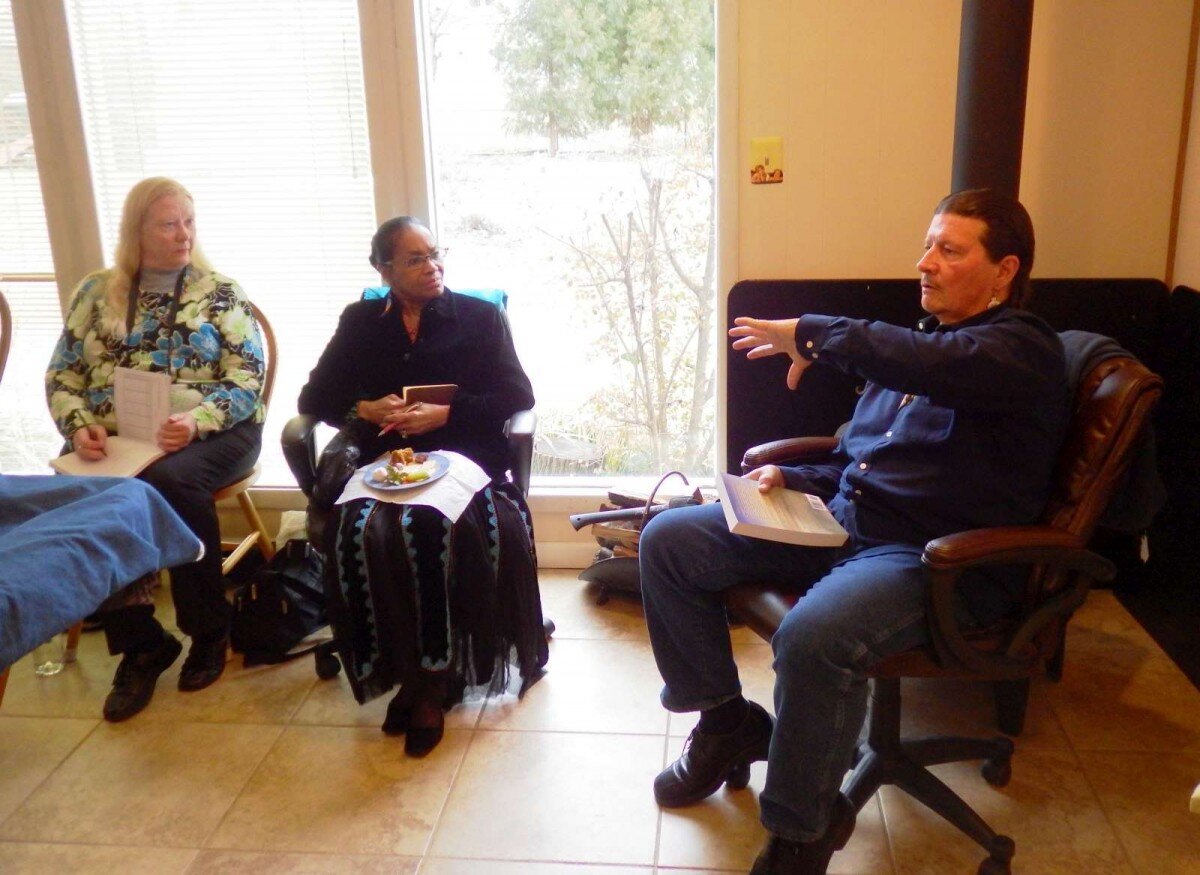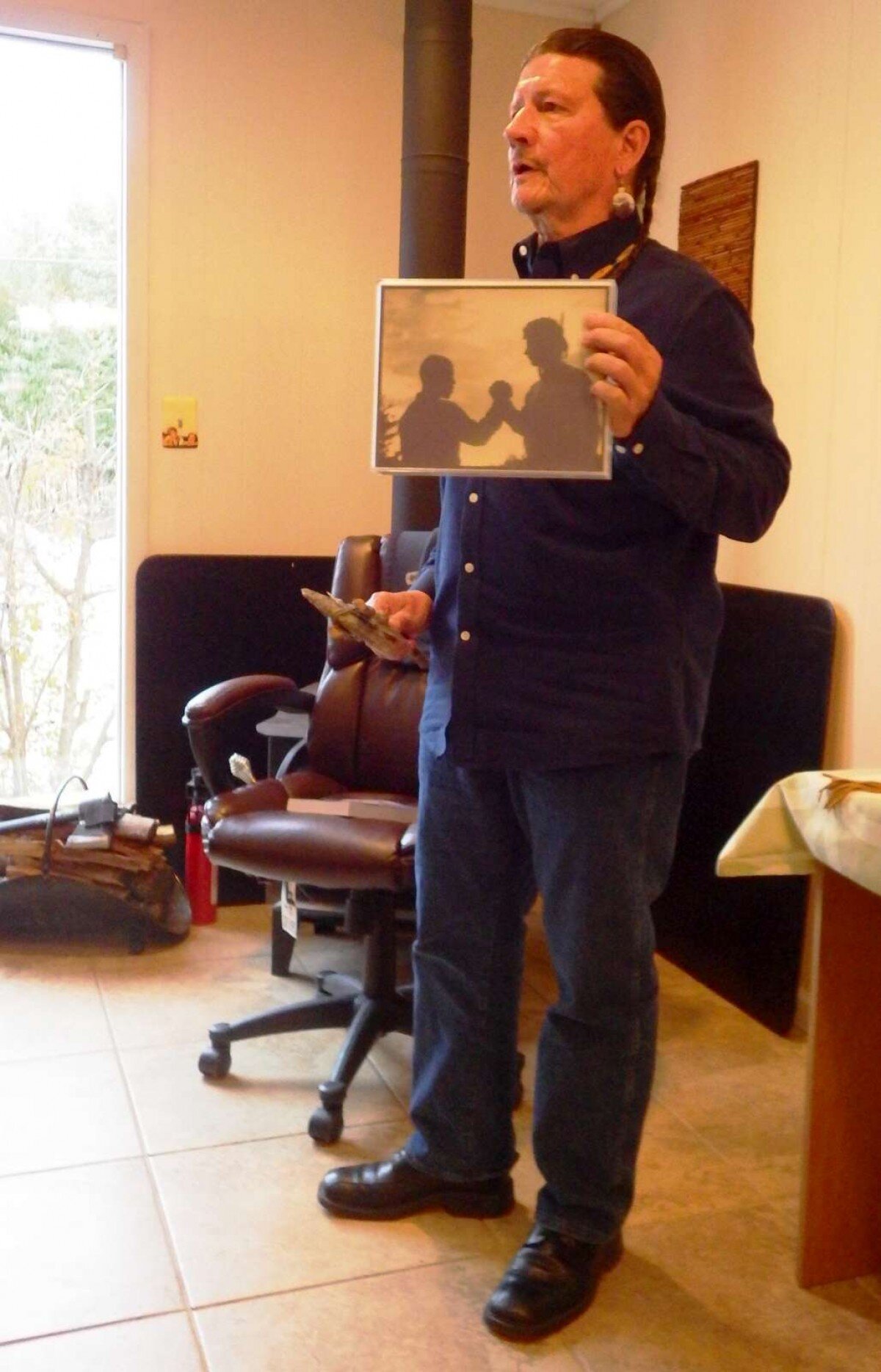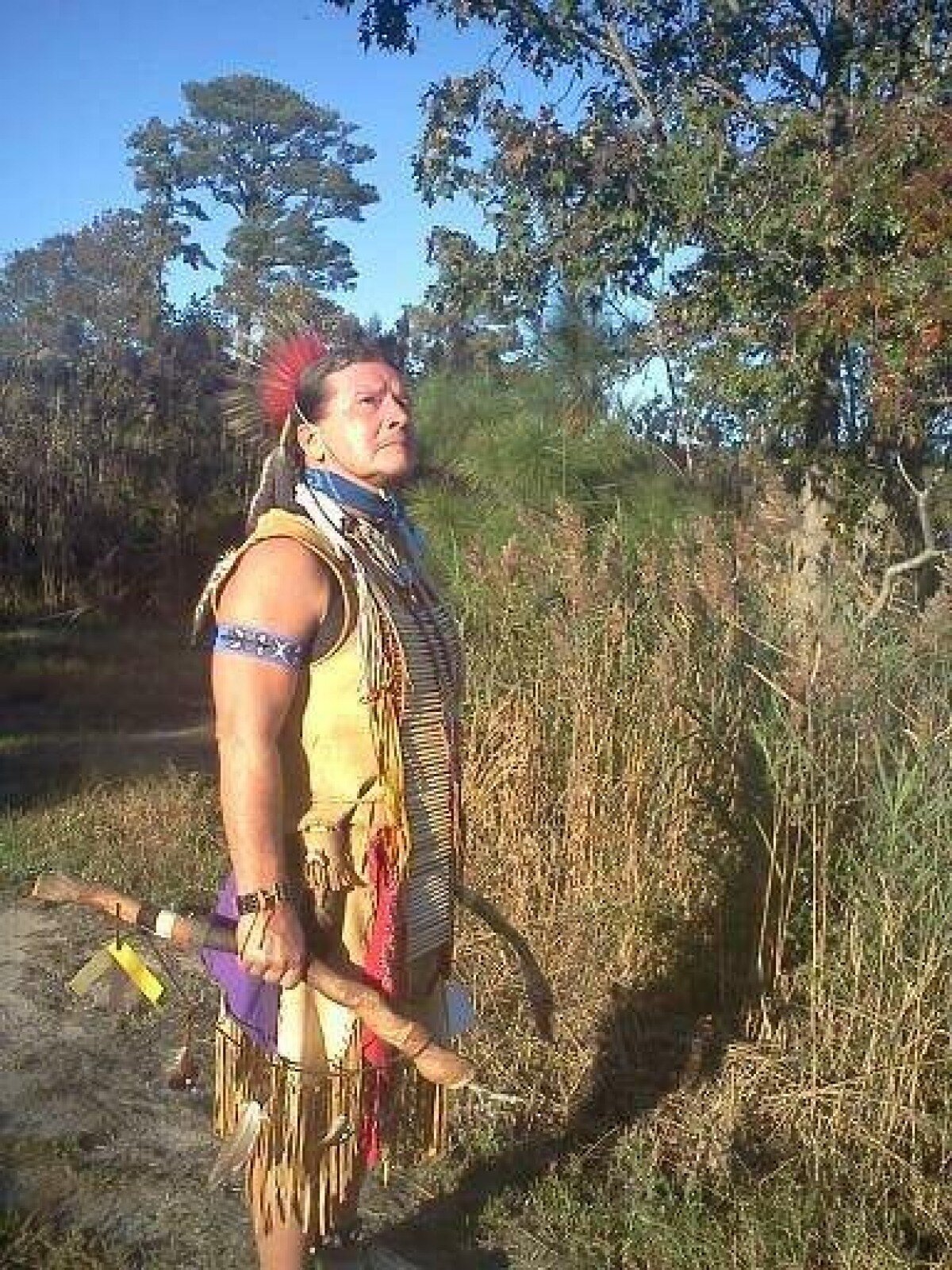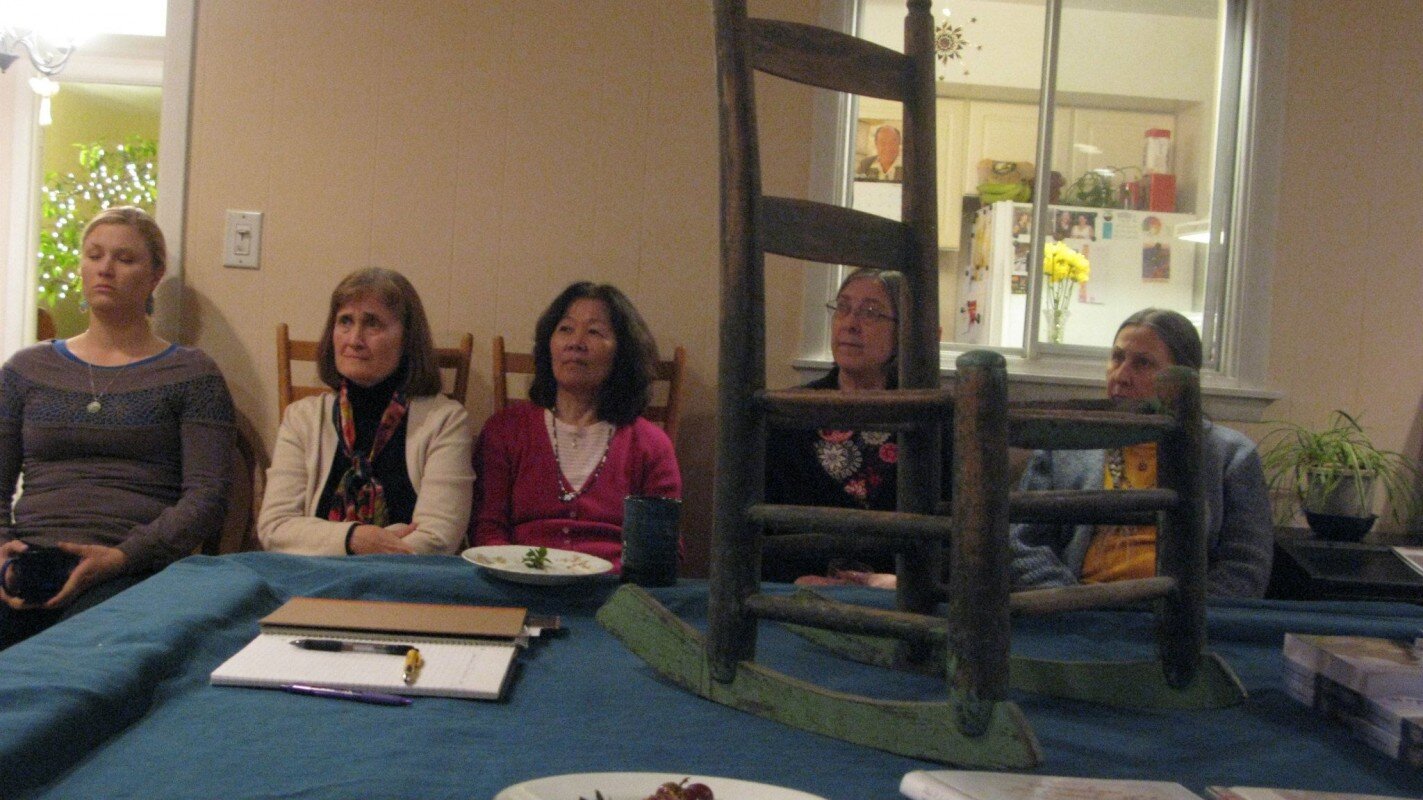HOPE FOR RACIAL UNDERSTANDING
Kim Dadachanji, Dottie Chicquelo, GrayHawk, Paul Bulow, Brenda Miller
Reconciliation begins through beginning to see the good in people's differences, instead of just seeing and fearing the differences themselves. Many people are working for just such understanding. If you are one of them, then the meeting that took place in Bowie, Maryland on Saturday, March 1 will be of interest to you.
We sat in a "talking circle" to listen to Gray -- Michael GrayHawk Parsons -- introduce his story that is woven into his newly published book, Hope on Hatterask. His story is truly a story of the melting together of people of different cultures and races who intersected with each other because of their decisions to honor and respect people's differences, instead of insulating themselves in the familiar.
In Hope on Hatterask, Gray evokes the spirits of his ancestors, his maternal great-great grandparents, a Scots Irishman and an Algonquin Coastal and Skura:re (Tuscarora) Native American woman. In this historical fiction, based on their true story, their lives collide and merge with a man of Senegambian descent on the shores of Hatterask Island, North Carolina.
In case you are not familiar with the geography of North Carolina, Hatterask (Hatteras) Island, part of the Outer Banks, is a barrier island off the Carolina coast. Gray explained that many of the names that are used today are not the original Native names given to these places and rivers. For example, the present Pamlico River and Sound were originally called Pamptico by the North Carolina First Peoples.
Gray writes in his description of the book: "It is important to recognize that the three main characters represent, in a general way, the three racial ethnic groups that comprise the vast majority of the American population today. And they certainly represent those who played the most significant role in shaping what American society is today since the first recorded contact between English-speaking Europeans and Native Americans. They are Red, Black, and White people...
"The story takes place in the early 1800s and chronicles their lives from early adolescence through early young adulthood. Each character's individual culture, ethnicity, spirituality, geography of origin, and ancestral history is explored in detail. Their stories are told in their voice from their perspective and with candor...
"My prayer for you is that you will discover or rediscover a profound respect and appreciation for your own ancestral past. Perhaps in doing so you may even move forward in some way with a renewed hope for your future."
Gray told us that he has the blood of at least two peoples running in his veins and that his life journey has been one to understand, honor, and reconcile them within himself in the truest sense. He wrote this book for his ancestors' story to be heard and understood from a broader perspective and to promote the healing of the past and hope for the future.
Paul and Nancy Bulow, who have known Gray for quite some time now, organized the gathering in cooperation with WFWP Maryland Chapter and held it in the warm and down-home atmosphere of their home. As Paul wrote, the book was "enlightening, exciting and hard to put down. I gained special insights about my own ancestor, who was kidnapped in the mid-1600s from England and brought on a ship as a cabin boy to this continent. I am drawn to GrayHawk as a person and as a writer because he sees the necessity of unity and love beyond race bringing hope in even the direst of circumstances."
Nancy said, "We had the honor of hosting Michael GrayHawk Parsons in our home for a book signing. The reason we see his book as significant is because just beneath the surface in our society is an unresolved pain because of the untold events surrounding the founding of this nation. The book reveals this history in a way that can bring us to a new level of understanding as a 'blended' society and as one family of humanity. But even within a family there is unresolved hurt, anger, and resentment. I see the formula for healing this pain to be repentance and forgiveness, and I see Gray's book as an opening for that to occur.
"Where will world peace begin?" she continues, "It will begin when each of us finds healing from the wounds we have inflicted upon each other. The founder of WFWP, Dr. Hak Ja Han Moon, calls for healing to begin with the 'logic of love.' This is the logic of the heart which knows no boundaries of race, religion, or culture and sees and brings out the good and the true in a person and in relationships.
"Why is Hope on Hatterask a story of healing? It tells the story of three peoples, red, black, and white, whose destinies crash into one another with the outcome not one of misunderstanding and cruelty, but one of mutual respect and intimacy. They create relationships of honor and respect which can serve as a model for world peace."
The talking circle provided an opportunity for each person to share. We gathered around the pool table that had been covered by a cloth. A 111-year-old weathered rocking chair, made by Gray's great-great-grandfather Elijah Sermons, along with copies of Gray's book, sat before us on the table as we listened and shared together.
Mrs. Brenda Miller, member of WFWP Maryland, commented, "As I heard Gray's introduction to his book, I realized that, as an American, I must humbly and sincerely seek out and understand the history of this nation from the source: the First People who were here before anyone else. So today, through their descendants' hearts and words, we can learn and understand rich content that is usually not known or acknowledged by most of us."
Mrs. Dottie Chicquelo, assistant director of the Office of Multi-Ethnic Student Education at the University of Maryland, commented, "I think the story will be brimming with energy, excitement, and authenticity. I am most interested in learning how the three identities mesh their different cultures, heritage, and customs." Dottie also reflected on the gathering saying, "After the book highlights from GrayHawk, we enjoyed a wonderful feast consisting of a variety of dishes from veggies, herbs, etc., that Mother Earth and Father Sky provided. It was a wonderful evening."
Mrs. Kim Dadachanji, WFWP Maryland chairwoman, said, "I am grateful that Gray has shared his story. The more we listen, the more we can tear down the veil of ignorance surrounding our nation's history and the present situation of people of Native descent. As we become more aware, we can begin to take an active role to heal our nation's wounds."
Michael GrayHawk Parsons, author of Hope on Hatterask
Ms. Katherine Cromwell commented later, "As I continue to read the book, I am impressed by the intimate understanding Gray gives of what is going on inside each of the characters. We readers come to see these people as real people who have helped to create this diverse cultural melting pot of America. As we learn to respect the good, the just, and the true that is within each culture, we see hope to build a new culture that incorporates the true as well as the colorful within each culture. We can learn to see those who may be different externally as the same in heart and mind and come to see all as our extended family, no longer seeing others through eyes of fear and mistrust."
Gray ended by saying that beyond our cultural and racial differences, we need to realize that we are all indigenous people and that we are one humanity with one Creator.
Michael GrayHawk Parsons (Gray) was born and raised in Washington, North Carolina. "Little" Washington is located on the Pamptico (Pamlico) River and Sound, and is only a short drive from where the first recorded contact took place between English-speaking Europeans and Native Americans. He is a graduate of East Carolina University and did postgraduate work at Johns Hopkins University, Morgan State University, and the University of Maryland, Baltimore County. He is of Algonquin Coastal, Skura:re (Tuscarora), Tsalagi (Cherokee), and Scots Irish ancestries. He drums, sings, and dances at Native powwows in the East and is a survivor of two different cancers. He resides in the Baltimore, Maryland metro area.
Hope on Hatterask is available on www.amazon.com.

